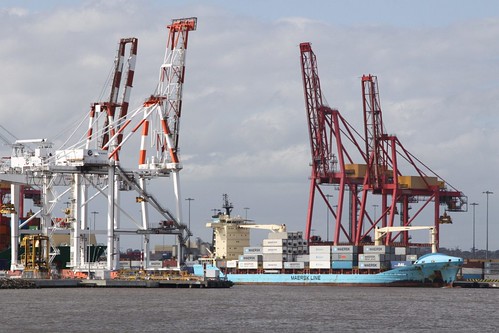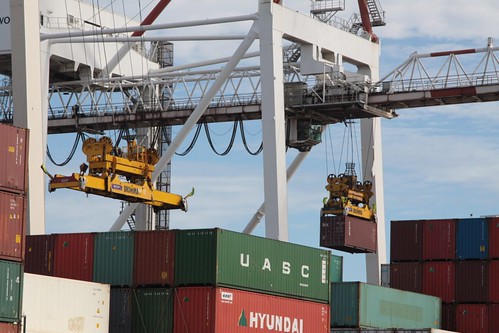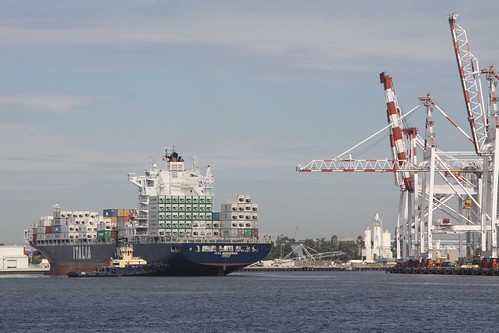Every day refrigerated containers filled with chilled meat, fruit and dairy products are moved by train across Victoria to the Port of Melbourne, ready to be loaded on ships for export around the world.
The containers arrive at the rail head by truck, then are loaded onto the train.
Electrical cables are plugged into the wagons.
And more electrical cables join the wagons together.
To supply electricity from the onboard diesel generator set.
The gensets used by some operators are pretty spartan looking.
Some just tie down commercial gensets to ‘flatrack’ containers.
In any case, the train eventually arrives at the port.
Trucks move the containers between the rail terminal and the wharf.
The containers sometimes needing to be stacked up until their ship arrives.
Plugged into ‘shore power’ to keep the chiller unit running.
Once the ship arrives.
It’s time to load the cargo.
Then bon voyage.















This is fascinating. I’ve been reading shore power studies from an overseas port and this is a useful insight into an applicantion.
Shore power for ships is a good way to cut emissions – their normal engines are filthy.
https://en.wikipedia.org/wiki/Cold_ironing
In Australia installing such a system at the White Bay Cruise Ship Terminal in Sydney has been proposed.
https://www.portauthoritynsw.com.au/sustainability-and-environment/air-and-noise-emissions/shore-power-study/
Over in the USA moves have also been made to provide shore power at truck stops, so drivers don’t need to run their engines during rest breaks.
https://afdc.energy.gov/conserve/idle_reduction_electrification.html
While it should of course be a lot more, I am surprised at how much freight is moved by rail in our state.
If you don’t notice them, then it shows how efficient trains are moving freight. 😉